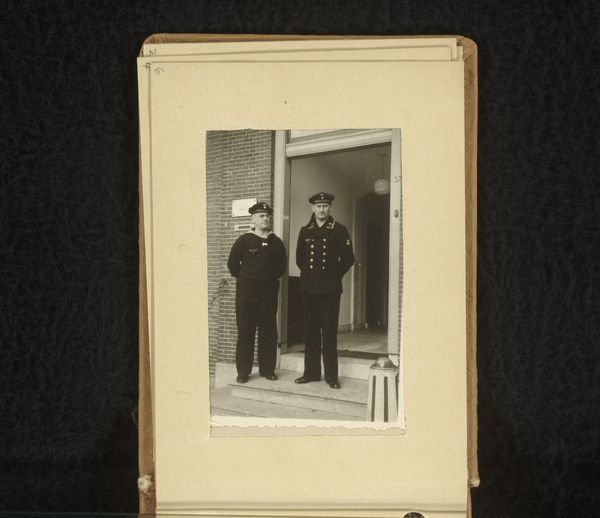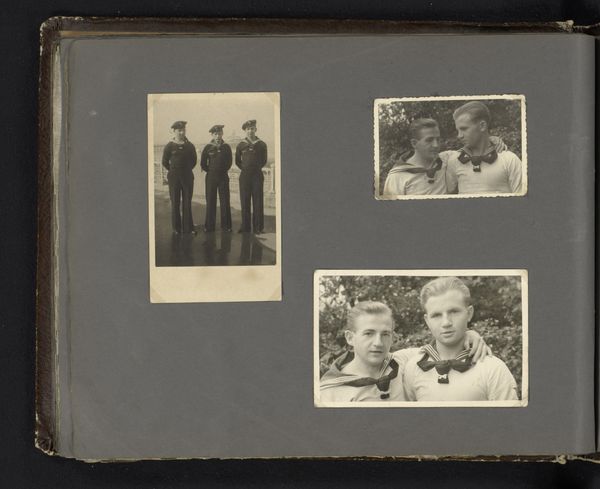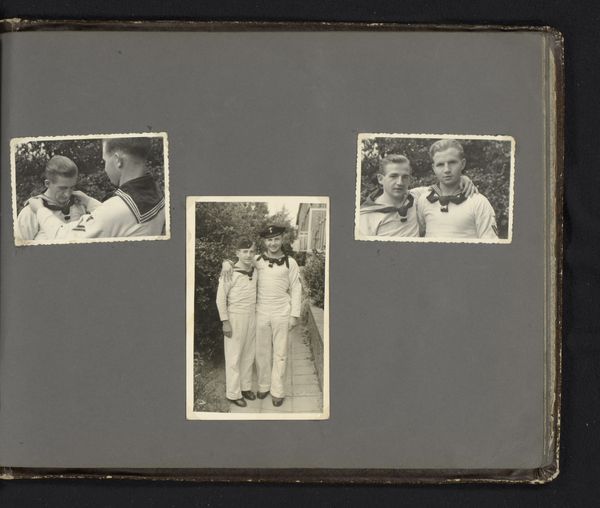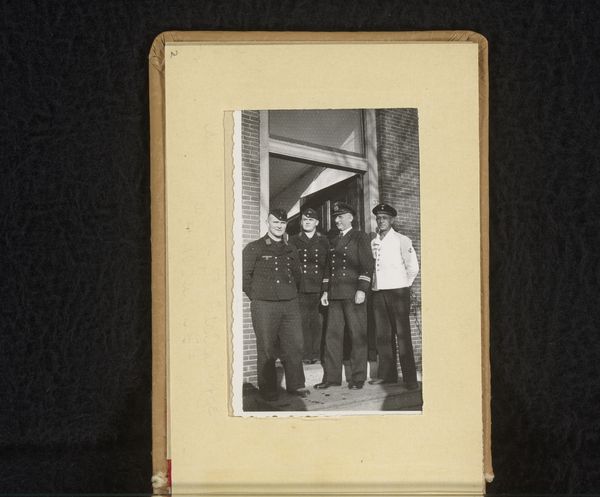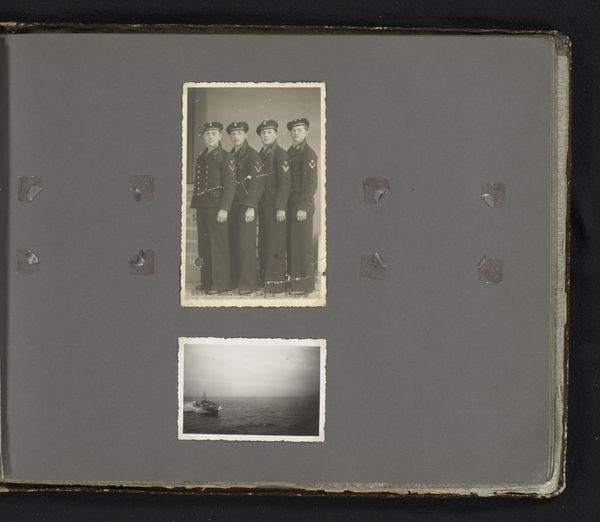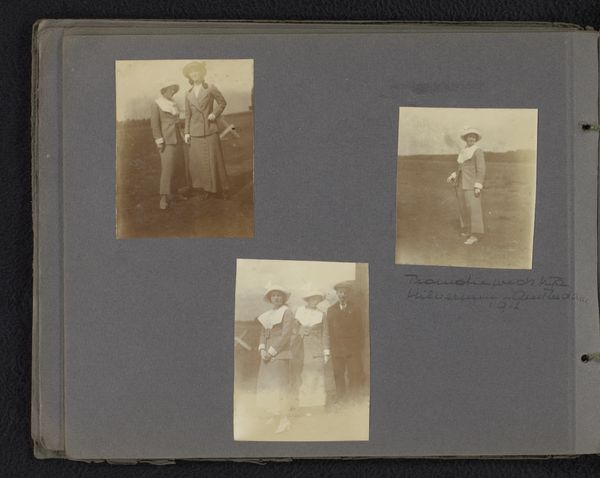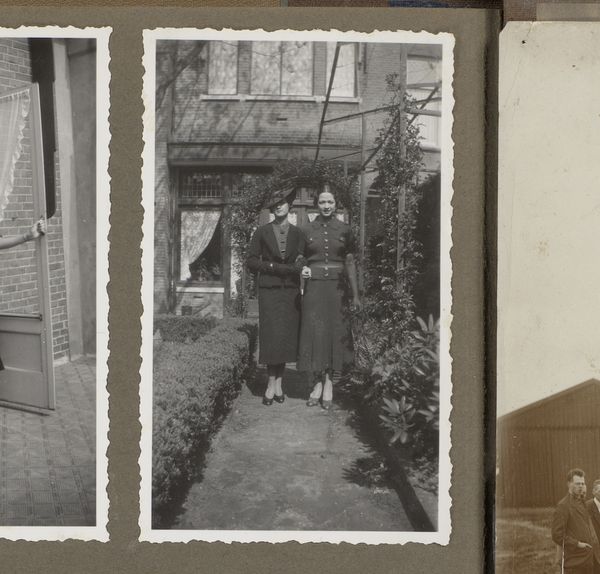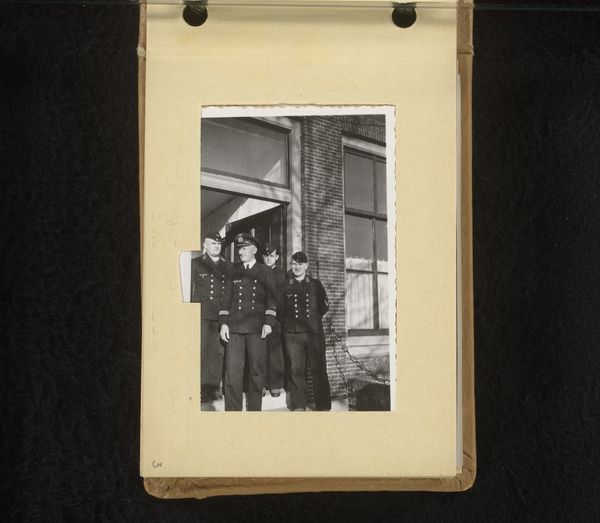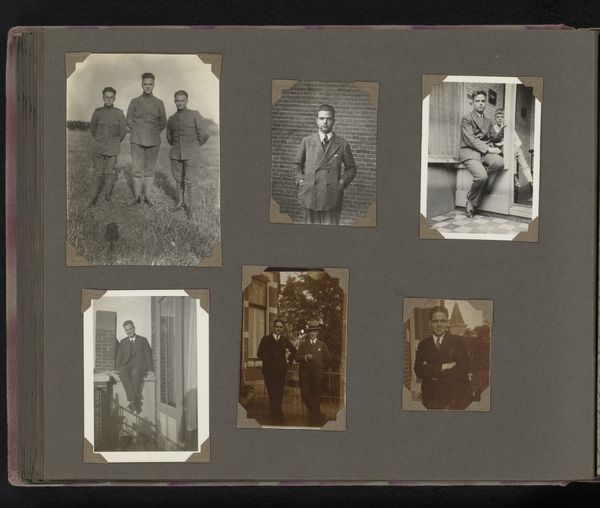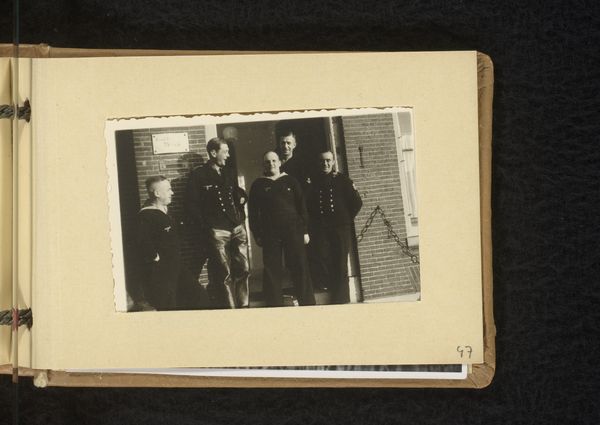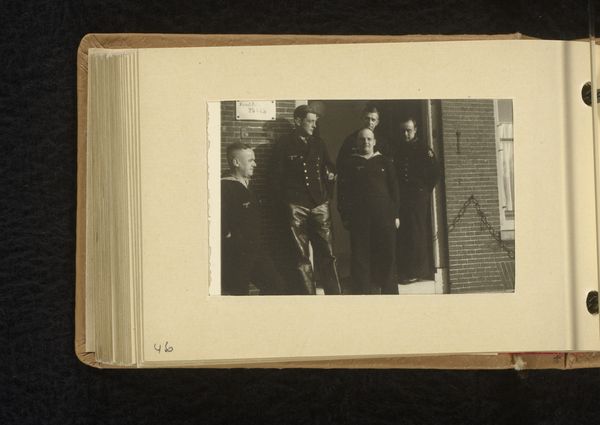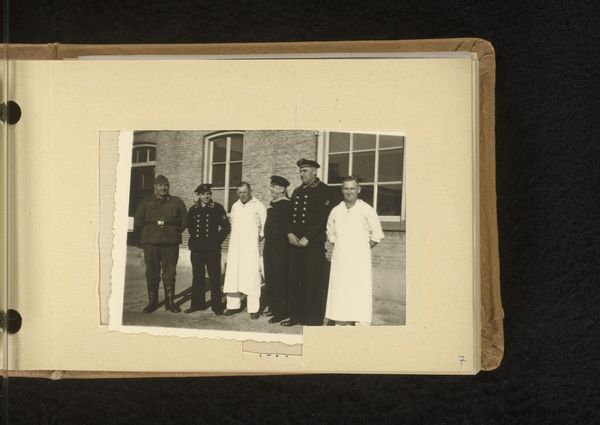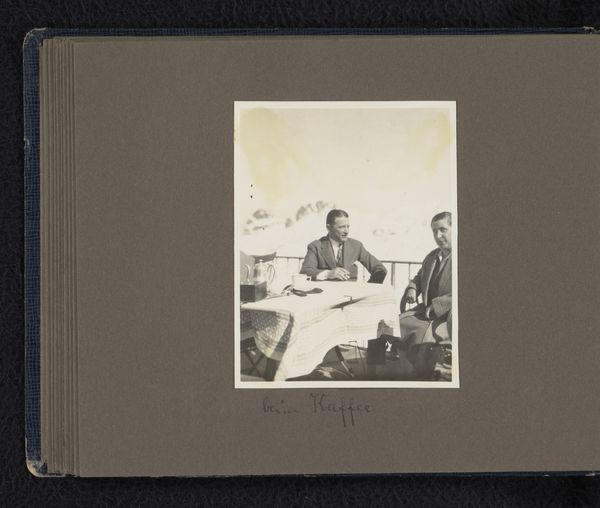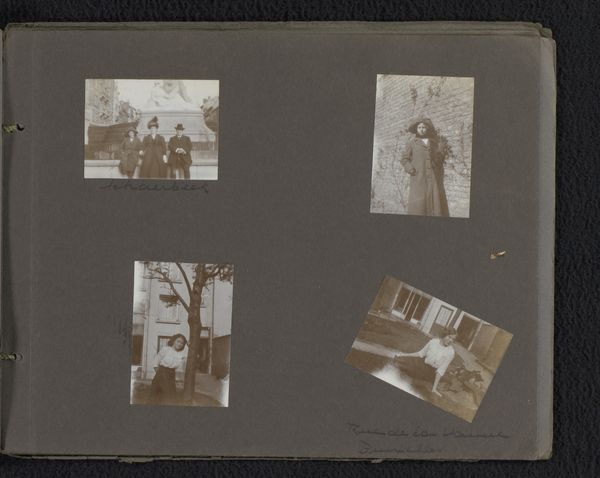
#
aged paper
#
toned paper
#
homemade paper
#
pottery
#
ink paper printed
#
white palette
#
paper texture
#
stoneware
#
neutral brown palette
#
historical font
Dimensions: height 60 mm, width 90 mm, height 85 mm, width 120 mm
Copyright: Rijks Museum: Open Domain
Curator: Welcome. We're looking at a photograph titled "Staande militairen," which translates to "Standing Soldiers," dating from 1940 to 1943. The anonymous artist created it using ink on paper. What strikes you immediately? Editor: It has a bittersweet quality. Despite the three men in uniform striking what seems like a casual pose, the toned paper and the subject's likely involvement in wartime suggests an undercurrent of melancholy. It makes me wonder about their destinies. Curator: Indeed, the monochrome palette emphasizes the tonal range, creating subtle gradations that define form and space. The composition is fairly straightforward—three figures arranged symmetrically—yet the slight variations in their stances introduce a dynamic tension. Editor: I'm immediately curious about the social context, especially considering the period. The photo would have been taken in the Netherlands during Nazi occupation, from 1940 to 1945, likely documenting or celebrating an idea of camaraderie that stood in defiance to Nazi Germany. Were these men resistance fighters, or members of the Dutch army or a military force? Curator: Those questions of identity certainly enrich the piece. However, I'm drawn to how the artist uses the texture of the paper to create a sense of depth. See how the slightly rough surface catches the light, adding dimension to the image? Editor: True, but that texture also reminds me of the fragility of memory and the ephemeral nature of photographic documentation, especially in times of conflict. It underscores the preciousness of this captured moment and these identities caught between the power and force of external historical pressures. Curator: Absolutely. Analyzing the materiality alongside the composition grants greater insight. The photograph itself becomes a study in contrasts, revealing tension between hope and the looming spectre of war. Editor: Exactly, and reflecting on it in this manner allows us to meditate on resistance, collaboration, occupation and survival during a tumultuous chapter of the Netherlands' story. Curator: Well said. Considering both the aesthetic structure and historical context unlocks deeper meanings within "Standing Soldiers". Editor: I agree completely. It is precisely these intersectional layers which permit artworks from the past to stay resonant for us in the present.
Comments
No comments
Be the first to comment and join the conversation on the ultimate creative platform.
